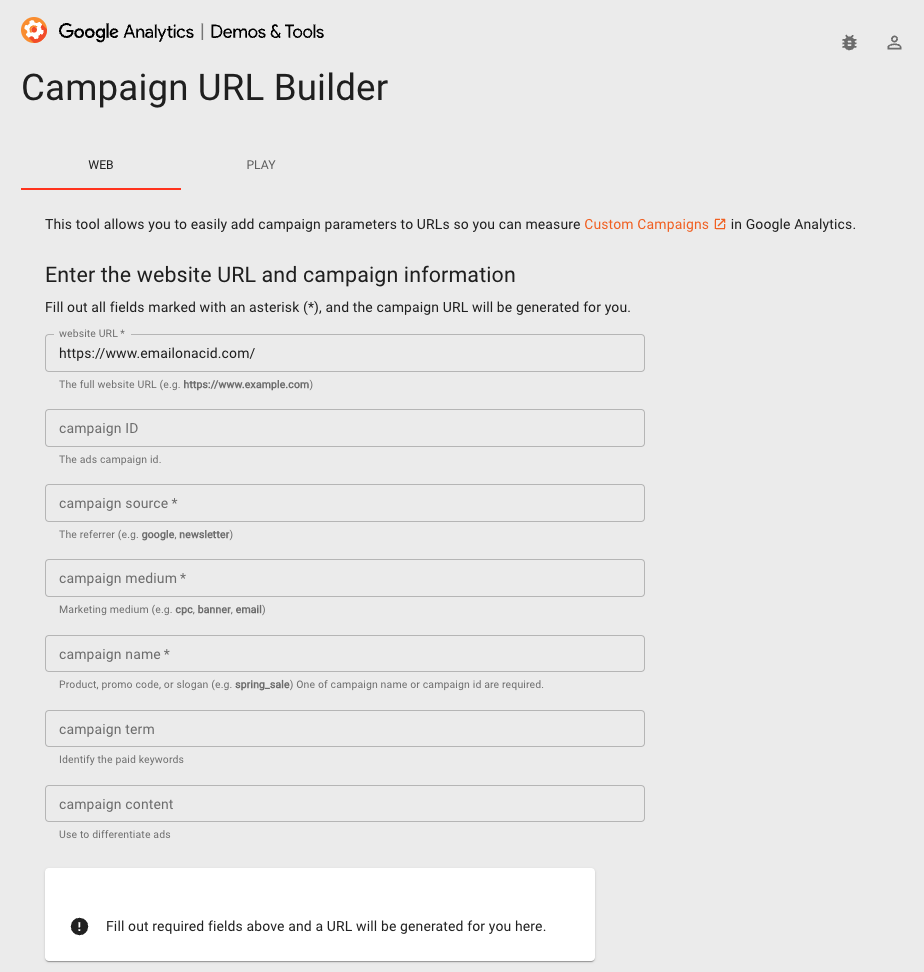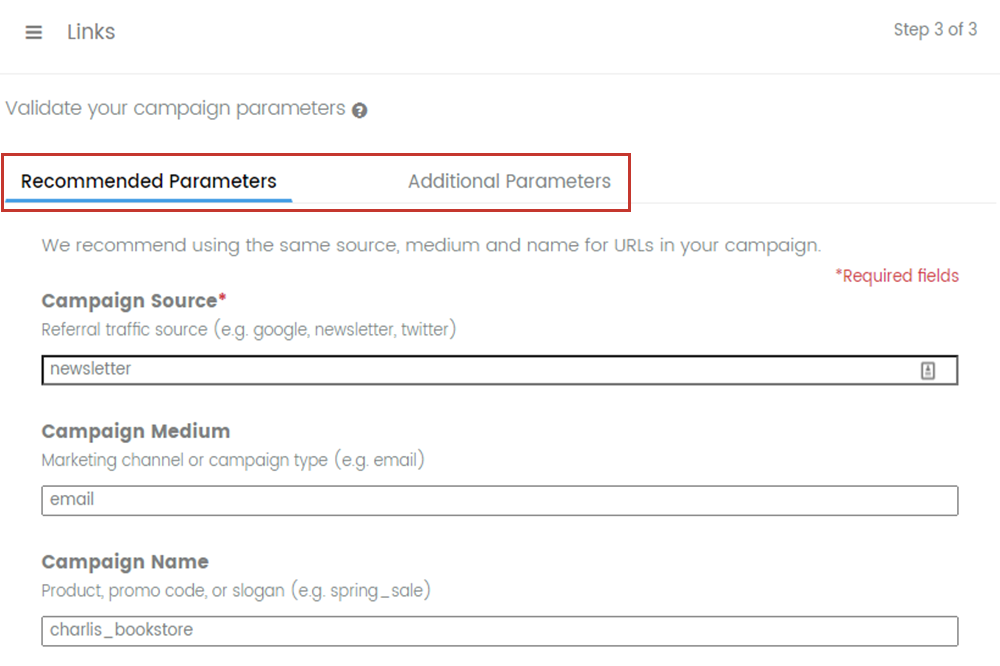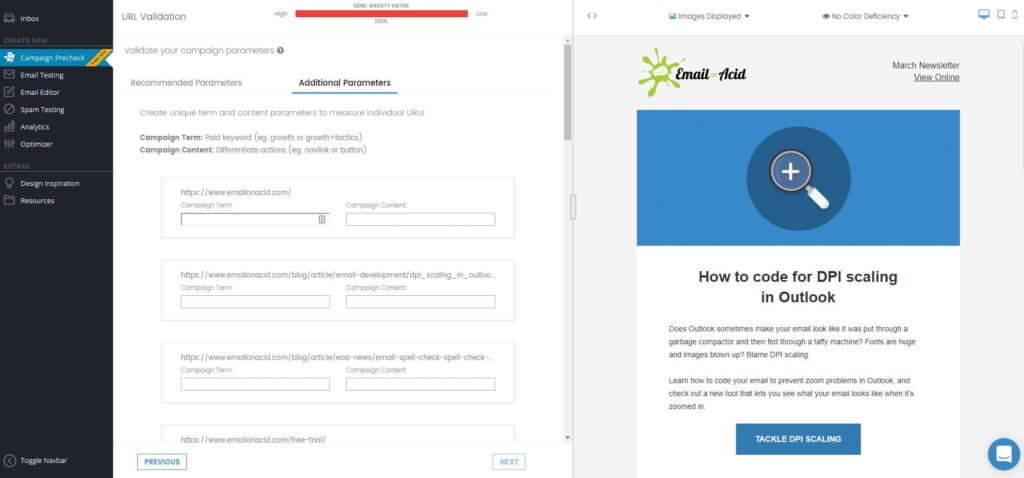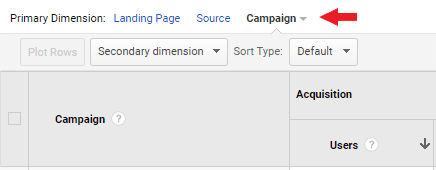Email Marketing
What Are UTM Parameters and How Do I Use them with Email?

Email Marketing

There are plenty of metrics you can use to track how subscribers interact with your email campaigns: open rates, click-through rates and engagement (read, skim, delete) are a few that usually top the list.
But what about measuring what happens after a subscriber clicks your email and lands on your website or landing page?
That’s where UTM parameters come in.
A UTM parameter, also called a campaign parameter or UTM code, is a string of text at the end of a website link. These codes allow Google Analytics (or other analytics platforms) to track website users who come from different sources or channels. Campaign parameters also give marketers the ability to track details about the specific campaign, such as the copy or images they used.
UTM codes typically look something like this:
https://www.emailonacid.com/blog/article/eoa-news/email-spell-check-spell-check-emails-before-sending-with-email-on-acid/?utm_campaign=Spell%20Check&utm_source=hs_email
&utm_medium=email
In Google Analytics, there are five parameters you can include in a UTM code:
When a user clicks a link with the UTM code, Google Analytics will be able to track the specific channel, source, campaign, campaign content, or campaign term that led them to your site. Then, you can follow those different parameters through Google Analytics to learn more about how your customers are engaging with your content.

UTM stands for “Urchin Tracking Module.”
Where does the “Urchin” come from, you ask? Long story short – Urchin was the predecessor to Google Analytics. When Google introduced UTMs, Google named them after the tool that was tracking these parameters – Urchin.
Using UTM codes in your emails can help you better understand what a subscriber does once he/she clicks in your email and visits your website. You’ll be able to better track email performance and engagement, including conversions (and assisted conversions), revenue, sessions, page views, etc.
UTM parameters also give you the opportunity to see what type of email content performs better. For example, if you A/B test different imagery in an email, you use UTM parameters (utm_content) to better track engagement from subscribers that clicked image A vs. subscribers that clicked image B.
Technically, Google’s UTM builder only requires you to enter the campaign source. However, keep in mind that the more parameters you include, the more information you will be able to track.
In Email on Acid’s UTM validation tool, we recommend including at least the campaign source, campaign medium, and campaign name.
Many marketing teams create custom UTM builders to help keep consistent terminology and tracking. If you don’t have a custom tool, Google has a Campaign URL Builder that will allow you to easily add campaign parameters to URLs.
With these tools, you can enter the link and the various parameters, and it will spit out a new link for you with all the UTMs included.

In some cases, your ESP may add UTMs to your links for you.
Email on Acid’s UTM validation tool (inside Campaign Precheck) will also allow you to add missing UTM parameters to your emails. Once you type your parameters into the UTM tool, the platform will update your HTML and add the campaign parameters to your links, so you don’t have to go back to an email editor or developer to adjust.

Email on Acid’s UTM validation tool separates recommended campaign parameters from optional parameters. You’ll notice the source is always required, though.

Optional campaign parameter tab in Email on Acid’s UTM validation tool. (Click to enlarge)
Once you have UTM codes in place, you can easily track how your email channel is performing against other marketing channels. You can do this by viewing the Channels report in Google Analytics, which you can find under Acquisition > All Traffic > Channels.

The Channels view can tell you the number of new users and sessions are visiting the site from your emails, what they’re doing when they get to your site (pages per session, bounce rate), and whether they convert.
From the Channels report, you can dig deeper into email performance by clicking on the email channel and changing the primary dimension in the report. You can set this dimension to one of the other UTM parameters you use, such as source, content or campaign. This allows you to easily compare and see what content, campaigns, or email sources are performing best.

Google Analytics Primary Dimension setting
Let’s take a quick look at a recent campaign Email on Acid launched:

This email, which we sent to our customers, was part of a campaign to announce our new spell check tool. For this email, we used these campaign parameters:
So, a link within the email would look like this:
https://www.emailonacid.com/blog/article/eoa-news/email-spell-check-spell-check-emails-before-sending-with-email-on-acid/?utm_campaign=Spell%20Check&utm_source=hs_email&utm_medium=email
Have you ever spaced on adding UTM parameters to your email campaign? Or forgot to keep them consistent across the email? We’ve all been there before.
Consistent UTM parameters are crucial in tracking email performance and informing future email content. That’s why we’ve added a UTM validation tool to our email QA platform.
The UTM validation step will scan your email links for UTMs, which means you won’t have to click on every link in your email to double-check the tracking. If you haven’t added the UTMs, Campaign Precheck will give the option to do so (the tool will adjust your code for you). It will also flag any UTMs that are missing parameters or have inconsistent campaign names.
Google Analytics is picky with its UTM parameters. If one UTM code has slightly different formatting (such as a capital letter or extra space), Google will track it separately. So, for example, a campaign called “retention” will track separately from one called “Retention.”
Campaign Precheck’s UTM validation tool will flag these kinds of inconsistencies.
UTMs are an essential tool for tracking email performance. Yes, it’s an extra step in the creation and QA process, but including UTMs can help you improve future campaigns and show off the ROI power of email marketing.
How do you use UTM codes? What kind of information do you gather with campaign parameters? Share with us in the comments section below!
And if you want to save yourself some time during your email QA process, check out our UTM validation tool – it will help make your life easier and ensure your reporting is accurate.